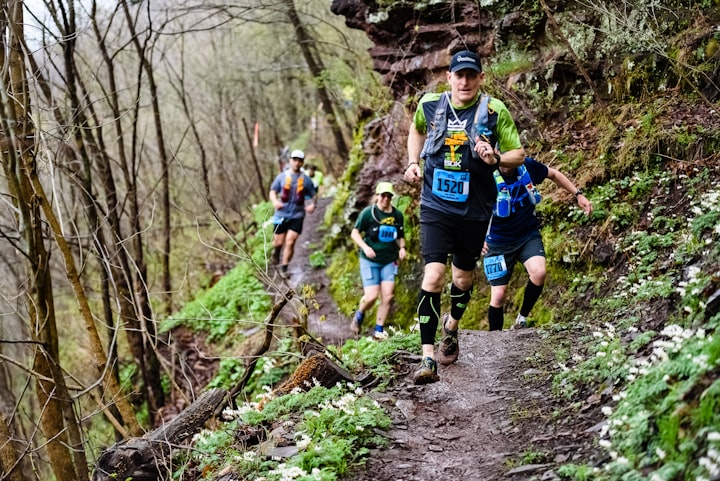Cross-Training Benefits To Build Trail-Running Fitness
Trail-Running
Cross-training is often seen as the less glamorous option compared to our favorite sport or as something runners have to do when they're injured. However, with the winter season approaching and people wanting to reduce their training volume and intensity during the holidays, could cross-training be a valuable tool to enhance fitness and boost running efficiency?
We just wrapped up the NCAA Cross Country Championships in Charlottesville, Virginia. It was an exciting event, especially when Parker Valby from the University of Florida, the female champion, made a surprising revelation during the pre-race press conference. She shared that this fall, she only ran two to three days a week and focused on elliptical and cross-training sessions for the rest of her training. Valby had experienced stress fractures in her calcaneal and cuboid bones earlier in 2022 and has been open about her desire to prevent running-related injuries in the future. Despite her unique training model, she still participated in workouts and occasional long runs. This approach to high-level run training could offer valuable insights into minimizing injuries and maximizing longevity in the sport, especially for Division I athletes like Valby.
To improve in any activity, it's important to consistently engage in that activity. This is especially true for maintaining a good level of fitness between training cycles, which is crucial for reducing the risk of running-related injuries during race season. Whether you're feeling amazing after a busy fall season of racing, slightly burnt out, or dealing with some minor discomfort, incorporating cross-training into your routine can be extremely beneficial. This is particularly true for masters athletes who want to prevent running-related injuries or for those who want to diversify their training without adding excessive stress to their bodies. But what types of cross-training are best for building running-specific fitness? Let's explore the different modalities that closely resemble running movements and help maximize gains in running economy, and learn how to incorporate them into your training plan.
The Art of Improving Running Performance with Cross-Training: A Scientific Perspective.
In 2018, a research was conducted to evaluate the impact of various cross-training methods on running performance and injury risks. The study involved high school runners and compared their movement quality, running economy, performance, injury-related biomechanical variables, and hip muscle strength before and after training with different cross-training modalities. The runners replaced two days of easy running per week with four-week cross-training sessions and were divided into three groups: cycling, indoor elliptical, and outdoor elliptical bike. The study revealed that elliptical bike training was the only modality that improved functional movement screen scores and running economy before and after training. All groups showed improvements in 3,000-meter performances, but the cycle and elliptical bike groups had the most significant effects. This highlights that incorporating both cycling and elliptical bike training in early-season training can be the most effective cross-training modalities to enhance running performance.
A recent study conducted by the Journal of Strength and Conditioning Research focused on experienced runners. The study lasted for four weeks and divided the participants into two groups. One group exclusively trained on elliptical bikes, while the other group solely focused on running. The researchers evaluated various factors such as maximal oxygen consumption, ventilatory threshold, respiratory compensation point, running economy, and 5,000-meter time trial fitness. Surprisingly, the study revealed no significant differences between the two groups. Both groups experienced a notable increase in ventilatory threshold, and there were no significant variations in any of the tested variables at any point in time. These findings suggest that elliptical bike training can be an incredibly effective method of cross-training for experienced runners, helping them maintain and enhance their physiological and performance capabilities.
In a study conducted in 2019, researchers examined the habits of around 300 lifelong runners who had attended a four-day workshop on becoming lifelong runners between 2007 and 2018. The participants, who had an average age of 50, were surveyed on their running frequency, injuries, body weight changes, and supplemental training as they grew older. The study revealed that 88 percent of the runners incorporated cross-training into their routines, with indoor cycling being the most popular choice. Surprisingly, 90 percent of all participants reported that they were still running. Interestingly, the study found no difference in running interruptions due to injury between those over the age of 60 and those under the age of 60. The researchers concluded that individuals could continue their beloved activity of running even after the age of 60 by intentionally including weekly cross-training in their regimen.
A Fitness Instructor's View on Cross-Training:
Specificity is crucial for improving in any sport. For runners, consistency and increasing their aerobic fitness are key to making progress, especially for those who are new to the sport or have struggled with consistency in the past. However, it's important to find a balance to avoid running-related injuries and mental burnout. Factors like weather and accessibility can also play a role. Some elite trail and mountain athletes, like Kilian Jornet and Emilie Forsberg, face challenges in the winter months when living in the mountains of Norway. As a result, they switch to skiing as their primary mode of training. In this article, I will focus on various indoor cross-training options that are easily accessible to most of our readers.
So, who benefits from implementing cross-training into their training, and how should each of these groups weave cross-training sessions into their training? There are always nuances to questions like this, but I’ll guide you through the decision-making heuristics I use with my athletes, elite and amateur alike.
If you're an athlete who wants to increase your training volume but you're not sure if your body can handle running twice in one day, there's good news. Science shows that you can achieve similar results by cross-training, with an elliptical bike being the best option for runners. Try running in the morning for 45 to 80 minutes, followed by a 30 to 40 minute cross-training session in the afternoon. This is a great way to transition to run doubles without the impact on your body. It's also helpful for runners who need to focus on time on their feet rather than mileage, and can help build your aerobic engine in a safe and low-risk way.







Comments
There are no comments for this story
Be the first to respond and start the conversation.